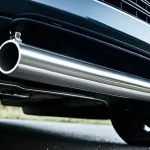Advanced Cooling Techniques for British Racing Car Transmissions
Transmission cooling methods play a critical role in the performance of high-performance motorsports vehicles. In British racing car transmissions, managing heat is a major challenge due to the extreme torque and high rotational speeds involved. Advanced cooling technology uses fluid dynamics principles to optimise the flow of coolant around the transmission components, ensuring efficient heat dissipation and preventing overheating.
A key element is the use of heat exchangers, which are often integrated directly into the transmission casing or connected via specialised piping. These heat exchangers transfer heat from the transmission fluid to an external cooling medium, typically air or water, maintaining optimal operating temperatures even under intense racing conditions. This integration is carefully designed to minimise pressure drops and maintain fluid flow integrity.
This might interest you : Winning the race: innovative gear ratio techniques for british racing cars
In addition to cooling system design, specialised lubricants formulated for extreme motorsports conditions are employed. These lubricants combine heat-resistant additives and friction modifiers tailored to withstand high temperatures and stresses. This ensures the transmission not only stays cool but maintains smooth shifting and durability, which are indispensable in competitive racing environments. Together, these transmission cooling methods keep British racing cars performing at their best.
Engineering Solutions for Optimising Transmission Efficiency
Optimising transmission efficiency in British racing car engineering demands advanced engineering solutions that address heat dissipation and thermal management. One critical approach is the use of custom-designed transmission radiators. These radiators are tailored to specific vehicle requirements, effectively reducing heat buildup in the gearbox. Efficient heat removal prevents power loss and prolongs component lifespan, ensuring uninterrupted performance during races.
This might interest you : Mastering headlight alignment for classic british cars: a comprehensive guide to uk road compliance
Thermal barriers and heat shielding complement this strategy by protecting sensitive transmission components from excessive heat exposure. Materials with high thermal resistance are strategically placed to deflect and absorb heat, maintaining optimal operating temperatures. This approach reduces internal friction, which directly enhances transmission efficiency.
Selecting appropriate component materials is equally vital. Lightweight alloys and composites with superior heat conductivity help maintain lower temperatures while supporting mechanical strength. British racing car engineering emphasizes these material choices to balance durability and thermal performance.
Altogether, these carefully integrated engineering solutions form a robust framework. They combat heat-induced inefficiencies, directly improving the transmission system’s reliability and overall race performance.
Case Studies from Elite British Racing Teams
British motorsport examples illustrate how advanced transmission cooling strategies contribute to exceptional performance. Championship-winning teams, such as those competing in GT and touring car series, apply innovative techniques to maintain optimal transmission temperatures under grueling race conditions. These teams commonly employ custom-designed cooling ducts and thermal management systems that adapt dynamically to track demands.
Real-world applications show that integrating heat exchangers with precise airflow control reduces component wear and prevents power loss. For instance, a leading British team implemented a dual-air intake system that effectively dissipates heat without compromising aerodynamic efficiency. This setup enabled stable gear shifts and increased drivetrain reliability, directly contributing to race success.
Industry experts emphasize the evolving nature of transmission cooling. Innovations now focus on combining material science advances with cooling fluid optimization. Expert commentary highlights how smart sensors and real-time temperature monitoring empower engineers to fine-tune cooling during a race, preventing overheating and ensuring longevity.
This case study approach reveals that the intersection of engineering ingenuity and race-driven demands drives continuous improvements in cooling strategies, a crucial factor in the dominance of British motorsport examples.
Emerging Innovations and Future Trends
Innovations in cutting-edge transmission technology are reshaping the motorsports landscape by enhancing cooling efficiency and system reliability. One promising development is the integration of active cooling systems, which dynamically adjust cooling flow based on real-time transmission temperatures. This approach reduces energy consumption compared to traditional passive methods while ensuring optimal thermal management during high-stress racing conditions.
Another significant trend is the use of predictive maintenance and smart monitoring tools. These technologies employ sensors and data analytics to detect early signs of wear or overheating in transmission components. Real-time alerts enable teams to intervene before failures occur, increasing racecar uptime and performance consistency. Predictive systems rely heavily on machine learning algorithms trained on vast performance datasets, making cooling precision more effective than ever.
Looking ahead, the push towards eco-friendly and sustainable cooling solutions aligns with the motorsport industry’s environmental goals. Innovations include the use of biodegradable coolants and energy recovery from heat exchanged within the system. These solutions not only improve the vehicle’s carbon footprint but also maintain the high-power demands of future motorsports. The convergence of sustainability and performance promises a new era in racing engineering.



